Two Truths and a Lie
This April Fools, we wanted to try something a little different. Play along with our game of Two Truths and a Lie as we try to stump each other with six lightning fast rounds spanning every continent with grasslands (sorry Antarctica). With each triplet of “facts” one lie has been snuck in. But which one is it? Stop scrolling at each picture if you want to play along and guess!
South America: Mirror Mirror
Which South American pampas animal is truly an ecological foil to a North American counterpart? Complex setups, here we go:
- Pampas Meadowlark. Like northern Sturnella species, the Pampas meadowlark is a denizen of grasslands across Argentina and Uruguay. With a yellow breast and long-toed, long-legged feet, this familiar blackbird can be distinguished from its foil by unique facial markings and a more dainty profile. It’s found breeding in most grassland types in spring and summer, and flocks up in large numbers in winter, when it more readily occupies agricultural fields.
- Pampas fox (Lycalopex gymnocercus) is a South American foil to the Swift Fox. While not a true fox, this canid, like swifties, is found primarily in grasslands but can also thrive in deserts. They are mostly nocturnal and solitary except in the breeding season, when they find a monogamous partner and raise kits in underground burrows. They are omnivores, but eat much more live prey than other foxes like the red fox, with 75% of the diet being animal matter.
- Dichroplus Grasshoppers. Like North America, some of the most important native herbivores in the Pampas are grasshoppers. Dichroplus is the SA ecological equivalent of NA Melanoplus (eg Differential Grasshopper, Two-striped Grasshopper). Eating both grasses and forbs, they are considered polyphagous, and they’re very damaging to agriculture, especially when they have outbreaks. In 2008-10, D. maculipennis had a massive population explosion (outbreak) with typical aggregation behaviors and mass dispersal flights in Buenos Aires, similar to its northern cousins whose outbreaks have left marks on Great Plains history too.
The first two scenarios are true! Although the species do have differences (Pampas Foxes will play dead to escape predators!), it’s more than fair to call them close ecological foils to those North American species.
- ADW: Swift Fox (Vulpes velox)
- ADW: Pampas Fox (Lycalopex gymnocercus)
- Grasshoppers of the Argentine Pampas, Norma E. Sánchez, María L. De Wysiecki
- Acridomorph, Dichroplus maculipennis: Info de especie
The Lie:
Pampas Meadowlarks. They’re very different from Eastern and Western Meadowlarks.
This Vulnerable species (Leistes defilippii) is thought to be declining rapidly as a result of landscape conversion for agriculture. They are black with a red breast. Declining between 56% and 99% over ten years. In Argentina, the only confirmed remaining population is found in SW Buenos Aires and eastern La Pampa. They require very tall vegetation cover and actively avoid planted areas, so conversion to agriculture is badddd. They’ll occupy land that’s been abandoned for at least 5 years.
Europe - BUGS
Nicole loves bugs and seriously thought about make each continent she covered be BUGS but somehow resisted and only talked about European bugs:
- European ladybirds (ladybugs) don’t eat aphids, instead preferring to eat plant sap and honeydew.
- The minotaur beetle, with large horns like a bull, will excavate burrows nearly 2 meters long with various branching tunnels in order to raise young in.
- The large blue butterfly spends part of its life as a caterpillar underground.
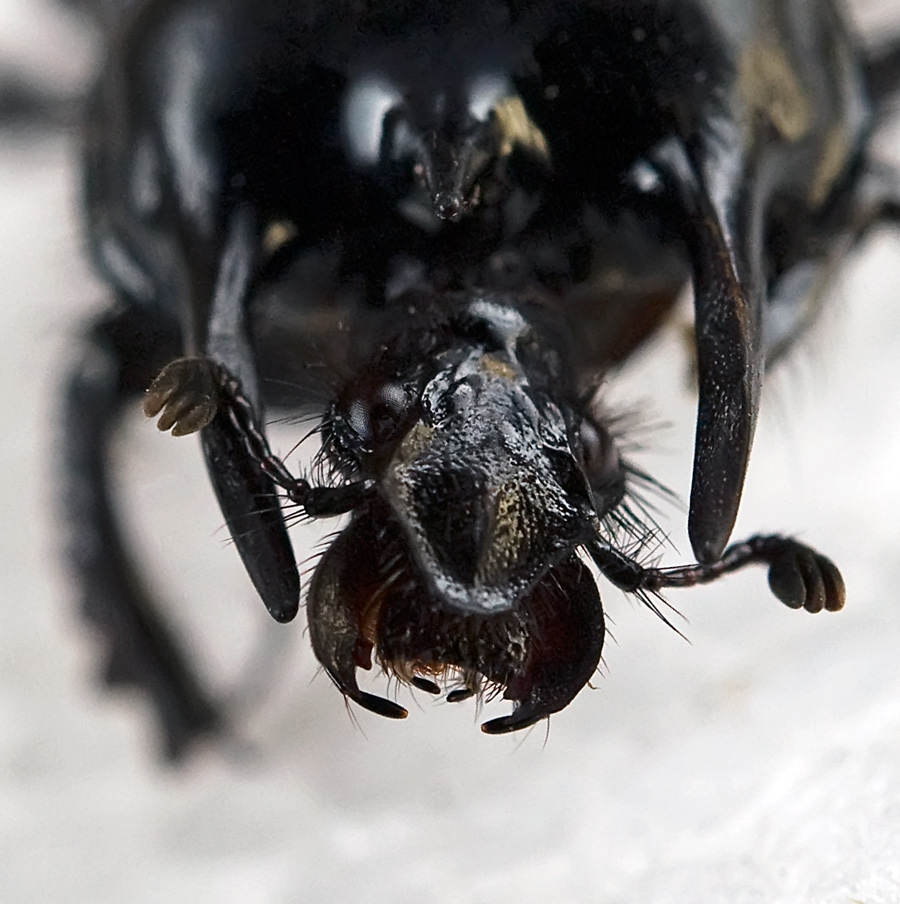
The minotaur beetle. A fantastic little poop-eater (scarab) that is a wonderful parent. A pair of minotaur beetles will build an underground labyrinth to house their babies as they grow with one egg being laid at the end of each little off-shooting tunnel. Each egg is lovingly given a ball of poop to munch on when it hatches and then the parents both die. The young will emerge in the fall and repeat the process, with their babies overwintering underground and emerging in the spring.
Another underground denizen, the large blue butterfly is a strange one. Its caterpillar begins life like most caterpillars by munching on the leaves of its host plant. Once it’s big enough however, it will find an ant colony and finish out its larval stage underground. The ants take care of the caterpillar and eat the honeydew produced by it. Unknown to the ant, the caterpillar still has to eat, and makes snacks of the ants young and eggs until it is ready to pupate and emerge as an adult butterfly to repeat the process over again.
The Lie:
Like ladybirds found elsewhere, European ladybirds eat primarily aphids and other small prey. One notable exception is the 22-spot ladybird which does indeed make its meals out of plant sap!
North America: Carnivorous Prairie Plants
Fun actual fact: grasslands in North America grow a variety of incredible carnivorous plants! Which of these carnivorous plants is a lie?
- Small Butterwort. Butterworts are a carnivorous plant that can be found in the same prairies being preserved for the Florida Grasshopper Sparrow.
- Purple Pitcher Plant. This carnivorous plant, Sarracenia purpurea, is native to large parts of the midwest and can be found growing in Minnesota prairies.
- Dwarf Sundew. The smallest sundew in the United States occurs in prairies and savannas in Texas and Arkansas.
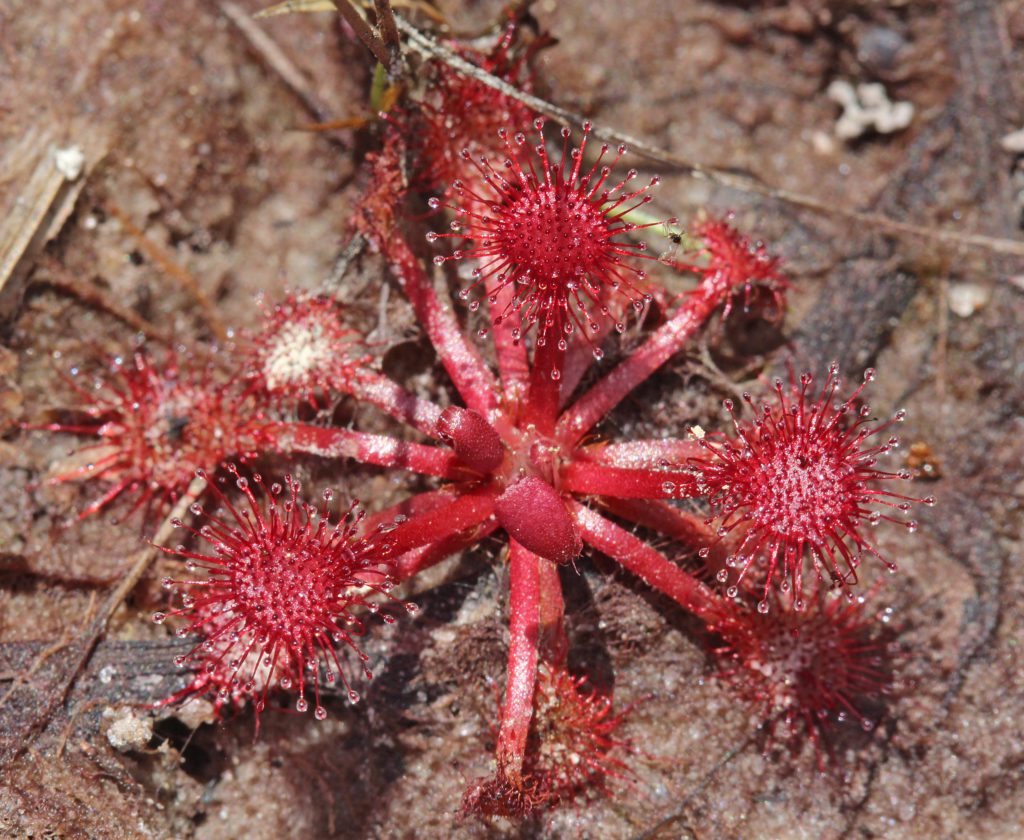
Sundews, bladderworts, butterworts, and a pitcher plant do live on the same prairies being preserved for the Florida Grasshopper Sparrow. The most common little butterworts include Small Butterwort, Yellow-flowered Butterwort, which grow in the same area where the ground orchid Fragrant Ladiestresses blooms.
The smallest Sundew in the United States does live in Arkansas and Texas. Warren Prairie Natural Area, where a barren subtype of prairie or savanna grassland occurs, is home to rare plants and supports familiar birds like Henslow’s Sparrows, Prairie Warblers, and Red-Cockaded Woodpeckers. This Dwarf Sundew can also found in Nash Prairie in Texas. It’s 3cm across, so look carefully. Even cooler: it’s dependent on a burrowing crayfish.
The Lie:
Sarracenia purpurea (Purple Pitcher Plant) is a bog-dwelling pitcher plant. It can be found readily in places like Warner Nature Center, where you can find them growing along their boardwalks over boggy portions of the park.
There are grassland-dwelling pitcher plants though, like this Hooded Pitcher Plant that depends on fire to thrive.
Eurasian Steppe: Ungulate Unknowns
- The saiga antelope has an intense breeding season wherein 80-90% of all males die.
- Prezewalski’s (shuh-VAL-skee horse is the last remaining example of a wild horse in the world.
- The Mongolian gazelle currently has a population of around 1.5 million individuals (maybe more), rivaling the great migrating herds of Africa in size.
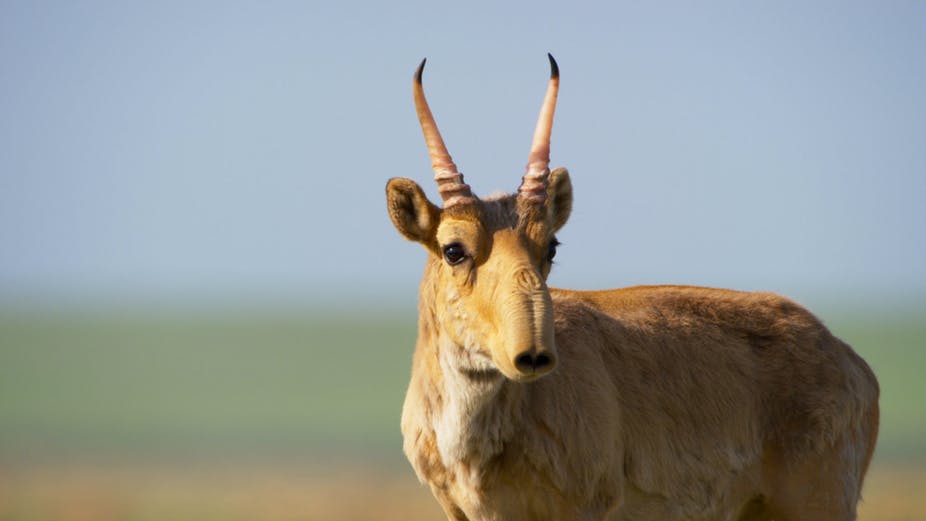
Male saiga antelopes do die off at rates of 80-90% of the total breeding population. Between fighting for harems, and simply refusing to eat during mating season, the male’s chances at survival are low. This type of extreme breeding seasons are not unique just to the saiga however. Male antechinus will breed with every female it can find until it dies of exhaustion. Mortality in this small mammal for males is 100% by their first birthday.
Prezewalski’s horse, or simply the P-horse, is widely regarded as the last example of a wild horse in the world. While populations of “wild” mustangs exist in a few places, they are actually domesticated horses that have escaped and become feral. In Mongolia the P-horse is called the Tahki and is much revered as a powerful, wild being that cannot be tamed. Save the Wild Horses is a great organization to find out more information about the Tahki.
The Lie:
The Mongolian gazelle population is the lie. While some sources (we’re looking at you, WWF) seem to have some outdated population statistics, current research seems to suggest that at most there are 800,000-900,000 individuals left. Some studies have found even lower numbers with perhaps only 300,000-500,000 existing. In the 1940s many more roamed the steppe, with estimates ranging from 1.5-3 million. One thing is certain: they are in need of more attention and research!
Africa: even more BUGS
Not all insect groups are well studied in Africa, but here are three things we definitely know about inverts from the Mara-Serengeti Ecosystem.
- Butterflies: Butterfly diversity in Serengeti depends on the heterogeneity of the ecosystem. Research has found that disturbances generally cause butterfly diversity to flourish, with both natural and human disturbance like burning, grazing by wildebeest, and human activity increasing species richness.
- Termites: Termites play a significant role as ecosystem engineers in Serengeti, but they’re also significant decomposers. Some termites are a frequent decomposer of mammalian hooves from dead animals, something which not even the savaging vertebrates in Serengeti does, not even vultures or hyenas.
- Dung Beetles: Dung beetles perform a significant functional role in ecological processes in Serengeti. During the wet season they’re responsible for removing and burying ALMOST ALL DUNG during the wet season, making them important for plant growth, secondary seed dispersal, and even parasite control.
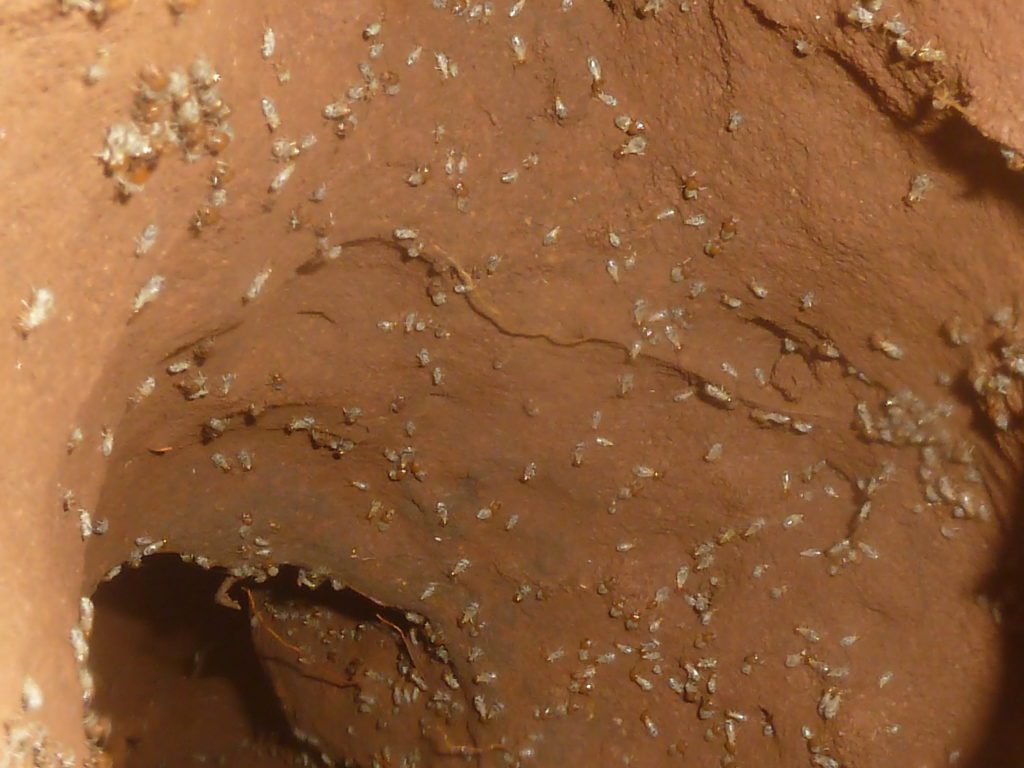
Dung Beetles do perform these significant functional role in ecological processes. During the wet season they’re responsible for removing and burying ALMOST ALL DUNG during the wet season. So dung beetles are thought to be important in bioturbation, plant growth enhancement, secondary seed dispersal, and parasite control.
Termites in the genus Odontotermes are a frequent decomposer of mammalian hooves from dead animals. None of the savaging vertebrates in Serengeti uses these remains, not even vultures or hyenas. Termitaria also play a keystone role in providing habitat to several small mammals and reptiles.
The Lie:
Butterfly diversity in Serengeti depends on the heterogeneity of the ecosystem, but that’s because disturbances, even expected grassland disturbances, decrease species richness. In agriculturally modified savanna, over half the species of butterfly disappear. All disturbances, including fire, wildebeest grazing, and human development, negatively impact butterfly diversity so it’s important to maintain a heterogenous landscape where disturbances don’t occur uniformly.
Primary Source:
- Entrican, S. A., Metzge, K. L., R., M. S., & Fryxell, J. M. (2015). Serengeti IV sustaining biodiversity in a coupled human-natural system. Chicago: The Univ. of Chicago Press.
Australia: The Weird, Giant, and Deadly
The final round and it’s the strange creatures that call Australia home.
- Wombats have backwards-facing pouches.
- The biggest earthworm in the world lives in Australia and can reach 2 meters (6.5 feet) in length.
- Mosquitos in Australia can also reach giant sizes, and can transmit more diseases than any other mosquito populations known.
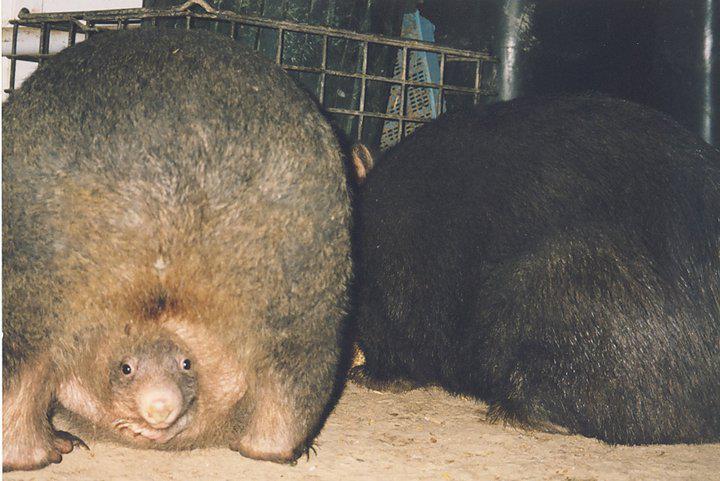
As pictured, wombats do indeed have backwards-facing pouches! This is to help keep dirt out of their pouch as they dig. Bilbies, another digging marsupial, also have backwards-facing pouches and so do koalas (despite living in trees). Wombats also poop cubes, take four-six days to digest a meal, and have a mouth full of rootless teeth like rabbits or rodents which constantly grow. Weird creatures.
The Gippsland giant earthworm (Megascolides australis) is a record breaking worm. They can easily reach two meters in length and some sources claim three meters as a max size. Please enjoy this video of David Attenborough describing this horror with lots of squelching noises.
The Lie:
The mosquito fact is completely made up, and luckily Australian mosquitos are not giant or more deadly that the average population of mosquitos. Africa is believed to hold the record for most mosquito-borne diseases with one paper citing 36 different diseases.
We hope that you enjoyed this more informal game and learned a thing or two along the way! If you’d like to see more content like this, please let us know!
Additional Sources/Further Reading:
- LIFE and Europe’s grasslands: Restoring a forgotten habitat. 2008. European Commission. PDF.
- Minotaur Beetle. UK Beetles. https://www.ukbeetles.co.uk/typhaeus-typhoeus
Did you spot an error or have questions about this post? Email Nicole Brown.
